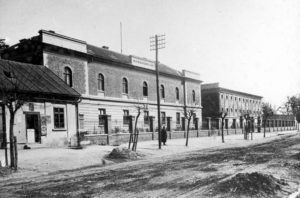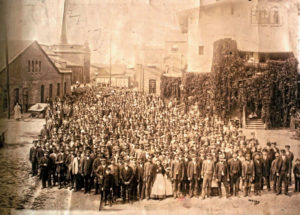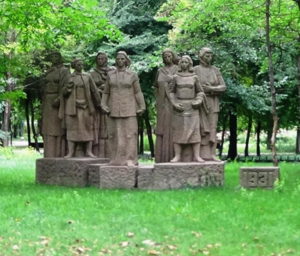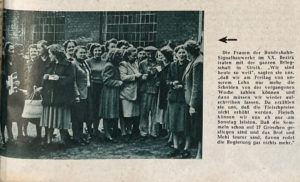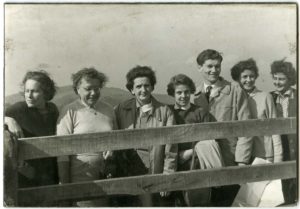by Susan Zimmermann
The alarm clock rings. It’s the day. A wonderful July morning, 6.45 a.m. Having arrived in Budapest yesterday evening, I will be heading for the “Daróczi Street Temporary Research Room” of the Hungarian Nationwide Archives, the central branch of the Hungarian National Archives. A few days earlier I had decided to make instant use of the unlikely window of opportunity generated by the combination of the – strictly Covid-19-restricted – re-opening of the Hungarian archives on the one hand, and CEU’s revised policy of advising strictly against unnecessary business travel alone on the other.
This business trip is strictly necessary and most enticing, not only because the many weeks of lockdown are finally over. The day today actually begins with an email written in January 2017, which, upon the news that the Hungarian archives are re-opening, I managed to conjure up from the depths of my email box. In January 2017 I was writing my first essay on female trade unionists in state-socialist Hungary. Following a landmark decision on women’s politics enacted by the party and state leaders in 1970, these functionaries and labour activists “within the state” were to become central actors in the politics of women’s work in Hungary in the years to come.
There were barely any women involved in the country’s top-leadership’s decision-making in 1970, and yet, I repeatedly encountered, in the documents from the trade union archives I had been studying so far, references to some brochure entitled “The work and life circumstances of industrial women workers”, published in 1969. The booklet was written by the trade unionist and researcher of the Social Science Institute of the Central Committee of the Hungarian Socialist Workers’ Party (MSZMP KB Társadalomtudományi Intézete, or SSI) Júlia Turgonyi (with the sociologist Zsuzsa Ferge added as a secondary author). Via a Hungarian online antiquarian bookshop, the brochure (priced pennies) arrived at my desk in Berlin where I spent the academic year 2016/2017 within no time.
It turned out that the piece summarized the results of a large-scale research project of the SSI that was to function as a central piece of knowledge informing the 1970 decision-making. For this reason alone, it was clear: it might be advisable to find the archives of the SSI which might include rich material about the study and its role in the larger political process. Yet there was one little thing that activated my research curiosity more than anything else. In footnote two on page five, the booklet stated: “As part of the preparation of the study, we conducted interviews with 260 workers from six factories. […] The staff of the six factories amounts to 19,995 people, 11,942 of whom are women.”[1]
It turned out to be quite simple to figure that the Hungarian Nationwide Archives indeed kept the archive of the SSI. Yet soon I met with a rebuff: “Collection not researchable for the time being” – this news struck me as no good a signal regarding research opportunities in the nearer future.
Postponed is not cancelled, and so, more than three years later, I ask again. And now the time is here: 7.15 a.m., coffee cup emptied and to the sink, metro and bus to the outskirts of South Buda, crumpled-up city map helping me to Daróczi street no. 3.
8.25 a.m., staff and archivists extremely helpful and professional, archival check-in done, pre-ordered material at the research space pre-ordered, following the strict Covid-19 protocol, for all-day today, first camera shot capturing the cover of the first box done.
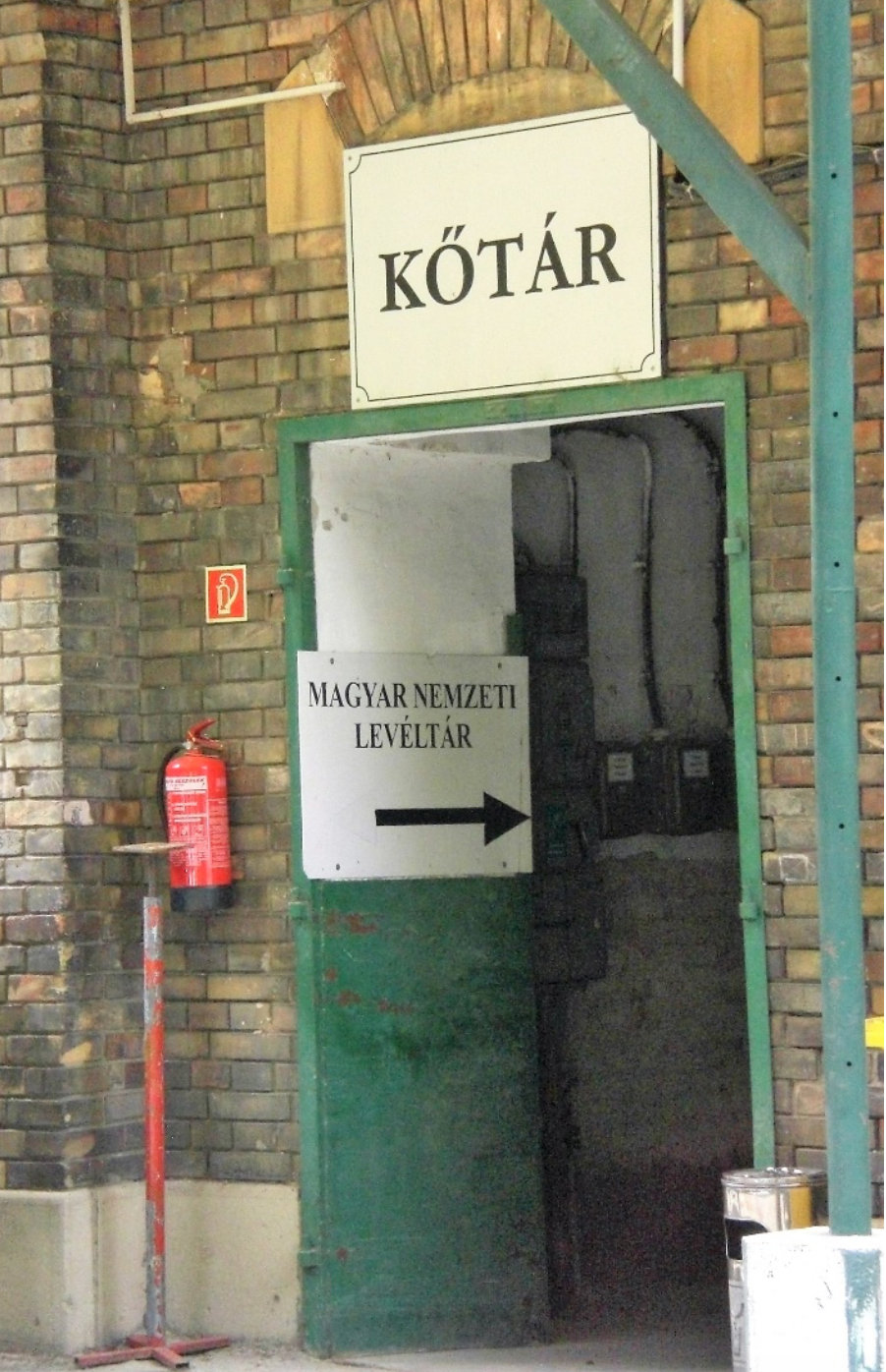
11.15 a.m., first break outdoor in the super-sunny former factory yard, I am thirsty and exhausted and excited. In the midst of one of the boxes I have found Júlia Turgonyi’s handwritten recording of her meetings with groups of women workers in selected factories, as well as the detailed background considerations, questionnaires, summary data about the workers collected in the same factories, and the documentation of the research method.
“Based on the enclosed questions, I spoke in three groups with twenty seven women workers. […] The group discussion had been prepared in advance by the party organization [of the enterprise, SZ]. Party members and non-party members, old and young, skilled workers and semi-skilled workers took part in the discussion. I did not record the names of the participants, only their place of work, occupation, and the duration of their employment relationship. I use numbers to differentiate between those who spoke up.”[2]
In other factories Turgonyi talked with “unskilled workers” too, and she made sure to include locals as well as commuters. In her view, the performance of the participants during the group discussion “testified to their realistic approach and their intention to express their opinions openly.”[3]
The individual questionnaires would ask the women workers to give information concerning their “life circumstances”, the “motivation for their choice of [type of] work and career”, and their “political activity”. In the group discussions conducted by Turgonyi, an even broader set of issues was to be addressed, including questions such as: “How are the state and social measures that alleviate the family and domestic work of women implemented in the practice of the factory (üzem), and to what extent are they implemented in your family?”.[4] Júlia Turgonyi also reported about manifold “terrible rumours” (rémhirek, in present-day orthography rémhírek) spreading in connection with the imminent introduction of the New Economic Mechanism, a major experiment in economic reform in Hungary.[5] Documents such as this one testify to the “living-on” of modes of social action which historian Gyöngyi Farkas documented in her superb analysis of the anti-collectivization protests of the 1950s and early 1960s in Hungary.[6] Lower-class peasant women – some of whom, or their daughters, might well have resurfaced among the women workers in the factories our SSI researcher visited – played an important role in these protests, and the spreading of “terrible rumours” constituted a core element of their modus operandi.
In our open-access database ZARAH-db we will soon publish the typewritten copies which verbatim reproduce the recordings of the group discussions done in the factories in course of the SSI research and the document discussing the “terrible rumours”.
I have always taken my archival pleasures lightly. Yet I may not, sadly, take them as lightly once they transmute into scholarly writing. Evidently, I am adamant to engage in thorough source critique, reflecting on both the trade unionist researcher of the Central Committee’s Institute hanging around (?!) with the women workers solicited by the local party organization, and the workers’ surely highly diverse motivations, hopes, and constraints when participating in the group discussions. And I need to do more.
I want to unearth the gender history of the New Economic Mechanism. I will discuss how female trade unionists operating within and on various levels of the self-defined workers’ state contributed to the making of the politics of women’s work in state-socialist Hungary. I want to explore how their relationship, both imagined and real, with working women shaped their politics. And I will show how the reality and hopes of women workers were both marginalized within and relevant for the politics of these many female trade unionists who operated from the shop floor to the highest echelons of the trade union apparatuses in state-socialist Hungary. Alas, then: Historical analysis is another species. It’s a pleasure that comes with a combination of creativity and rigorous analysis (hopefully) and deepening insight when engaging with (and occasionally feeling like suffocating from…) the material from Daróczi street and elsewhere. Hope it will work.
References:
[1] Júlia Turgonyi and Zsuzsa Ferge, Az ipari munkásnők munka- és életkörülményei [The work and life circumstances of industrial women workers] (Budapest: Kossuth Könyvkiadó, 1969).
[2] “Júlia Turgonyi, Feljegyzés a Kelenföldi Textilkombinát munkásnőivel folytatott beszélgetésekről [Notes on the group discussions with the women workers of the Kelenföld Textile Combine],” 13 December 1967, HU MNL OL M-KS 904-2 64. ő.e., Magyar Nemzeti Levéltár Országos Levéltára [National Archives of Hungary].
[3] “Júlia Turgonyi, Feljegyzés a … megbeszélések során az uj mechanizmussal kapcsolatban felmerült kérdésekről [Notes on the questions that came up in relation to the new mechanism (i.e. the New Economic Mechanism introduced in Hungary in 1968, SZ) during the discussions],” HU MNL OL M-KS 904-2 64. ő.e., Magyar Nemzeti Levéltár Országos Levéltára [National Archives of Hungary].
[4] “Vizsgálati programjavaslat a munkásnők helyzetéről készülő tanulmányhoz [Plan of inquiry for the study on the position of the women workers],” MNL-MOL M-KS 904-2-64. ő.e.
[5] “Júlia Turgonyi, Feljegyzés a … megbeszélések során az uj mechanizmussal kapcsolatban felmerült kérdésekről.”
[6] Gyönyi Farkas, Lázadó falvak. Kollektivizálás elleni tüntetések a vidéki Magyarországon 1951-1961 [Rebellious villages. Protests against collectivization in country-side Hungary 1951-1961] (Budapest: Pesti Kalligram, 2017].
Illustrations
1. Photograph (photographer: Tibor Jusztin) published in the journal Népi Ellenőrzés (1971). The caption reads: “Every day, woman workers from neighboring Komárno in Czechoslovakia commute to the new, modern spinning mill of the flax mill in Komárom, where they work together with their Hungarian female colleagues.”
2. Entrance to the building hosting the Daróczi Street Temporary Research Room of the Hungarian Nationwide Archives (photo of the author)
Revised and updated: 21.03.2021


